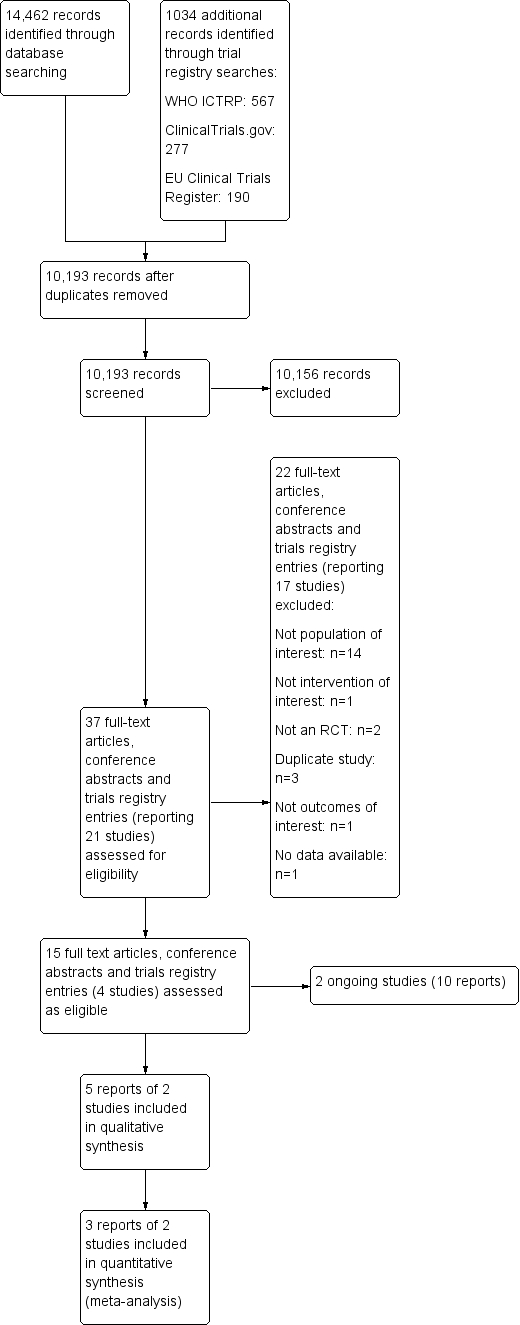Contenido relacionado
Revisiones y protocolos relacionados
Lisette M Vernooij, Wilton A van Klei, Karel GM Moons, Toshihiko Takada, Judith van Waes, Johanna AAG Damen | 21 diciembre 2021
Lars G Hemkens, Hannah Ewald, Viktoria L Gloy, Armon Arpagaus, Kelechi K Olu, Mark Nidorf, Dominik Glinz, Alain J Nordmann, Matthias Briel | 27 enero 2016
William B Hood, Jr., Antonio L Dans, Gordon H Guyatt, Roman Jaeschke, John JV McMurray | 28 abril 2014
Johanna Hummel, Gerta Rücker, Brigitte Stiller | 2 agosto 2017
Kunal N Karmali, Stephen D Persell, Pablo Perel, Donald M Lloyd-Jones, Mark A Berendsen, Mark D Huffman | 14 marzo 2017
Shipeng Zhan, Min Tang, Fang Liu, Peiyuan Xia, Maoqin Shu, Xiaojiao Wu | 19 noviembre 2018
Eduard Shantsila, Gregory YH Lip | 15 septiembre 2016
Shuhei Yamamoto, Takayoshi Yamaga, Kenichi Nishie, Chie Nagata, Rintaro Mori | 4 diciembre 2019
Nerida L Klupp, Dennis Chang, Fiona Hawke, Hosen Kiat, Huijuan Cao, Suzanne J Grant, Alan Bensoussan | 17 febrero 2015
Melissa J Palmer, Kazuyo Machiyama, Susannah Woodd, Anasztazia Gubijev, Sharmani Barnard, Sophie Russell, Pablo Perel, Caroline Free | 26 marzo 2021











